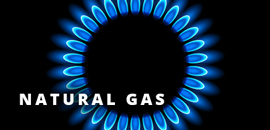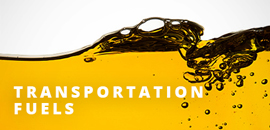PROGRESS REPORT
Capital Investments
New Construction
Designed and built to University of Texas (UT) System standards in compliance with building codes. Coordinated by a project management firm under UT System. The result has been increased owner participation in design reviews and throughout the construction process:
Center for Human Genetics (BCHGB) 17,700 GSF, notice to proceed Oct. 2021; substantial completion is June 15, 2023.
Interdisciplinary Academic Building (BINAB) Expansion 16754 GSF, notice to proceed March 25, 2022; substantial completion is May 14, 2023.
UT Health Rio Grande Valley (RGV) Cancer & Surgery Center 147,000 GSF; design development began May 2022; groundbreaking Oct. 14, 2022.
Major Renovations
Major renovations conducted in fiscal year 2022 which will impact The University of Texas Rio Grande Valley (UTRGV) utility consumption: Not Applicable
Conservation Initiatives
LED Lighting Conservation in Existing Buildings: Upgrade existing building lighting (mostly classrooms) with LED technology. This is an ongoing strategy to replace T8 fluorescent tubes and electronic ballasts with lower wattage 4000-5000 Kelvin LED lamps. The intent is to improve lighting quality and decrease energy usage and demand.
In fiscal 2022, completed indoor LED Lighting Upgrades which included 6,490 LED lamps in Edinburg, 27 in Rio Grande City, and 290 in Brownsville for a grand total of 6,807 LED lamps. These were mostly comprised of fluorescent tubes with electronic ballasts and a few incandescent, metal halide, and high-pressure sodium lamps.
The corresponding utility rebate request for the fiscal 2022 LED Lighting upgrades has been made through the AEP SCORE Program and is in-process.
Similarly, the LED rebate request to the Brownsville Public Utility Board (BPUB) is also in process.
LED Lighting Conservation in New Construction: LED lighting is the standard in new construction. The BCHGB, for example, will be 100 percent LED as was the HIONS building. Local, pc-based lighting control systems are also popular in new construction projects.
Holiday Energy Conservation Initiative:
Campus Facilities Operations staff participated in energy conservation campaigns for fiscal 2022 holidays including Thanksgiving, Christmas and Martin Luther King, Jr.
UTRGV classroom and event scheduling software was utilized to develop air conditioning schedules to conserve energy.
Cooling plant operations staff scheduled BAS-controlled equipment to turn off or operate in unoccupied mode. Trades crews reset temperature setpoints for stand-alone HVAC units in Edinburg. They also turned off non-critical exhaust fans and water heaters.
Heating, Ventilation, Air Conditioning and Controls Conservation Initiative:
The standard for end of service life and catastrophically failed motors is to replace them with premium, higher efficiency motors with VFD controls where feasible.
Inhouse VFD Replacements: In fiscal 2022, 3 VFDs were added to 3 existing ELIBR AHU’s and 1 VFD was replaced in an ELCTR AHU.
Siemens Desigo software is being installed at the Brownsville Center for Human Genetics (BCHGB). This software is to eventually replace Siemens Insight and is expected to improve building automation system reliability and performance along with the BACNet field panels.
Roofing Maintenance Program:
In fiscal 2022, roof maintenance projects were implemented in the buildings below. The scope of work was mostly patching small areas. The ELABS was the only building that received a complete, brand-new roof which along with the ESCNE roof repair enabled UTRGV to obtain a $1,783.50 utility rebate awarded by the AEP SCORE Program.
1. BCASA.
2. BVAQP.
3. EALUM.
4. EHABE.
5. EHABW.
6. ELABS.
7. ELIBR.
8. ESCNE.
9. ESSBL.
10. EVLAG A-F.
Building Envelope Maintenance Program:
In fiscal 2022, the envelope maintenance projects involved the buildings below. The scope of work was mostly sealing windows, and no rebricking took place.
1. EALUM.
2. ELIBR.
3. EMASS.
4. ESSBL.
5. ESTUN.
6. EUREC.
7. EVLAG A-F.
Water Conservation Initiatives:
At the UTRGV cooling towers, continue to minimize sewer blowdown and maximize cycles of concentration by utilizing pH control. Approximately 15 percent savings in blowdown.
New construction allows the campus to add to the existing irrigation controller infrastructure.
In Brownsville, eight of the 11 master valves are controlled via smart phone, tablet and desktop. The system monitors the flow of water in case of leaks or broken lines and sends visual and audible alarms to the computer or via text message.
The WINT water management, leak detection, and information system installed at the HIONS is a software as a service (SaaS) based platform that is monitored and controlled remotely through a dedicated portal and a mobile application.
Operations and Maintenance Initiatives
Scheduling Building Air Conditioning: Cooling plant operations staff implements, monitors, and maintains building heating, ventilation, and air conditioning (A/C) schedules which they enter in the Insight, Metasys, and Desigo building automation system software. The operations staff develops A/C schedules by referencing classroom and event scheduled data found in the UTRGV classroom and event scheduling software. The UTRGV scheduling software displays its events according to building, room number, date, event name, start time, and duration.
Preventive Maintenance Program: UTRGV expanded its use of The Maintenance Authority (TMA), a web-based computerized maintenance management software. Through time-tracking of physical plant staff by means of work orders, has led to the development of customized dashboards and reports. By defining and documenting work order activity, administrators are managing the work order process, closing PM and service call work orders in a timely manner, gauging employee performance, and determining when productivity improvements and/or additional resources are necessary.
Operating Sequences Utilizing Building Automation System (BAS):
Unoccupied Mode: Involves utilizing the building automation system to schedule or modify HVAC equipment operation to save energy in building spaces during unoccupied periods such as after-hours, weekends, between semesters, and holidays. Savings are obtained by increasing building indoor cooling temperature set points and/or decreasing heating set points which ramps or throttles down VFDs, valves, and dampers in chillers, pumps, air handlers, and terminal equipment.
74-70 space temperature set points are the standard university wide. This process involves continuous monitoring of VAV boxes and space temperatures, identifying boxes with heaters on, and adjusting if necessary to turn heaters off while maintaining satisfactory space temperatures. Resetting temperature setpoints down to 72-68 allows boxes at minimum occupied flow to further minimize heater on-time and thereby save energy.
Edinburg continued to participate in a utility-sponsored demand response program whereby cooling plant operators shed 800 kW by utilizing the BAS to remotely control the thermal storage tank’s operation to offset the chiller load.
By shedding electrical load, demand response program members keep the ERCOT power grid from overloading which helps avoid rolling blackouts in Texas.
Campus Facilities Operations staff in Edinburg has been participating in demand response for ten years and have earned over $350,000 for the university.
Turning off all Edinburg cooling plant chillers during low outside air temperature periods while continuing to circulate chilled water in the loops. This initiative is based on chilled water return temperature, generally 45 degrees Fahrenheit to turn off the chillers and restart them above 52 degrees Fahrenheit.
FY2022 was the first of a two-year PO issued to develop and implement energy/utility management software as a repository of utility invoice data, report generation, data analysis, and dashboard development.
Ongoing Annual Chiller Tube Cleaning for Water Cooled Chillers, Air Handler Coil Cleaning, and Chiller Eddy Current Testing Programs: In fiscal 2022, completed chiller tube cleaning at the cooling plants in Brownsville, Harlingen, and Edinburg.
Ongoing BAS Graphic Maintenance: In preparation for the Insight to Desigo software migration, cooling plant operations staff continued to identify, delete obsolete graphics, and decrease the number of active graphics by grouping where applicable. Benefits include minimizing the cost of graphic transfer to Desigo and improving operator productivity/troubleshooting.
In fiscal 2022, we hired a retired UTRGV lead cooling plant operator part time to help maintain and improve the BAS front-end.
GOALS
Utility Goals ending fiscal 2031:
Utility Conservation Goals
| Utility |
Target Year |
Benchmark Year |
Percentage Goal |
| Water |
FY2031 |
FY2021 |
5% with stretch goal 10% |
| Electricity |
FY2031 |
FY2021 |
5% with stretch goal 10% |
| Transportation Fuels |
FY2031 |
FY2021 |
5% with stretch goal 10% |
| Natural Gas |
FY2031 |
FY2021 |
5% with stretch goal 10% |
STRATEGY FOR ACHIEVING GOALS
Capital Investments
New Construction:
To meet the latest utility goals, continue to implement code-compliant best practices strategies in the design, construction, and commissioning of high-performance buildings which will optimize utility cost and consumption through product specification while maximizing process efficiency and building occupant comfort/equipment reliability.
Since the ongoing trend is to build higher energy-intensive medical/lab/technical facilities, it will be important to differentiate between new construction EUI versus existing facility EUI to accurately measure the contributions by the UTRGV energy management program.
Over the next 10 years, it is likely that the Edinburg campus will require a satellite plant to supplement the production and distribution of chilled water in the existing cooling plant (ECULP).
It is also likely that on or before 2026 a new cooling plant and a new thermal heating plant will be constructed on the North side of the UTRGV campus in Brownsville.
It can be expected that both new cooling plants and a thermal heating plant will house high efficiency chillers, boilers, and pumps that will contribute to reaching our utility goals for 2031.
Conservation Initiatives
UTRGV will continue to upgrade existing building energy and water consuming infrastructures to help us reach our utility goals as follows:
Upgrade the backup chiller and steam boiler at BRHB;
Upgrade the older, 1994 vintage roof top units (RTU’s) and their related controls at ECESS;
Upgrade the air handlers (AHU’s) at ECOBE;
Upgrade the laboratory controls at ESCNE B-Wing;
Upgrade the boiler and expansion tank at HACRB; and
Upgrade the AHU’s in Port Isabel.
The University will be contracting a Sustainability study to review current building systems, components and infrastructures to provide recommendations on possible system upgrades.
Continue to upgrade HPS, incandescent, fluorescent, and metal halide lighting to LED technology.
Continue with the Holiday Energy Conservation Initiative:
Ask senior administration to mass email a memo with energy-saving instructions for the UTRGV campus community and request their participation. This campaign is to include the following initiatives:
Energy management staff to prepare holiday A/C schedules with input from cooling plant operations, space management, and health and safety staff. Cooling plant operations staff to input the A/C schedules in the BAS and monitor them during implementation. HVAC equipment to run in unoccupied mode.
IT staff to utilize software that remotely sets computers to hibernate or sleep mode.
Students, faculty, and staff conserve energy by making sure to unplug, disconnect, or turn off energy-consuming devices/lighting, and if applicable, setting their air conditioning to unoccupied mode prior to them leaving for the holiday.
Periodically update our capital improvement plan to continue to replace outdated mechanical equipment with higher efficiency units to help us reach our utility goals.
The scope includes water- and air-cooled chillers, air handlers, chilled water pumps, boilers, motors, piping, controls, exhaust fans, VFD’s, etc.
Continue to update and implement the Roofing Maintenance Program for all existing UTRGV facilities.
Continue to update and implement the Building Envelope Maintenance Program
Continue to update and implement The Water Management Program which consists of strategies to optimize the consumption of domestic water, irrigation water, and cooling process water system management.
Domestic Water Management: Remove low water efficiency appliances and replace them with high efficiency toilets, urinals, and faucets as funding becomes available or as they fail.
Irrigation System Management: Irrigation strategies emphasize early leak detection, fast repairs, and cross-training groundskeepers to help with minor irrigation repairs. The heart of an irrigation system is the water sprinkler controller. The Edinburg campus has 69 electronic controllers, and Harlingen has three of them. The Brownsville campus has 11 web-based irrigation system controllers. Investments in web-based, programmable devices like the Rainbird IQ controller improve staff productivity and conserve water.
In FY2023, a new full-time position has been approved for a dedicated grounds maintenance manager. This person will oversee the irrigation management program UTRGV-wide. Hiring is in process.
Other related technology investments include master valves, flow rate sensors, and rain sensors. The former signal the controller to turn off either an isolated valve or the main when a preset max flow is exceeded. The latter will override the system when the moisture level exceeds a certain set point.
Cooling Process Water Management: In addition to the existing chemical cooling process water treatment programs, the filtration of cooling process water will benefit the piping and equipment infrastructure and conserve water. For example, a Spirotherm side-stream filter is serving the chilled water system in the Brownsville central plant and a full-size unit in Luis Colom.
Investigate design concepts and options to improve chilled water and condenser water filtration in the UTRGV campus in Edinburg. To help us reach our utility goals, a well-designed process water filtration system can conserve water and save energy by improving heat transfer in mechanical equipment.
The Brownsville campus air handler condensate recovery system (AHCRS) is tied to the Main, Library, and Sabal buildings. It was expanded with the Brownsville Music, Science, and Learning Center (BMSLC) and the Interdisciplinary Academic Building (BINAB) although the BINAB was left partially completed. The AHCRS is the primary make-up water for the cooling towers and domestic water is secondary. The AHCRS, which is piped to the cooling tower basins, conserves water year-round and cuts back on water treatment chemicals.
Operations and Maintenance Initiatives
Scheduling Building Air Conditioning: Continue to maintain, implement, and monitor BAS-based air conditioning schedules. Capitalize on opportunities to conserve energy and water, for example, by resetting temperatures and cutting back on chilled water and air flow during periods when classes are not in session and office-hours are reduced as between semesters and during campus closure periods.
Continue to evaluate the Preventive Maintenance Program to improve its effectiveness and thereby help reach our utility goals. Review and update PM scope of work and scheduling. Review and modify the PM roles and organization. Continue to add HVAC equipment lists in TMA for maintenance purposes.
Continue to develop and implement BAS sequences of operation which decrease utility consumption to help us reach our utility goals.
Turning off all Edinburg cooling plant chillers during low outside air temperature periods while continuing to circulate chilled water in the loops. We plan to investigate expanding this initiative to include VAV operation in campus buildings. During these periods, the actuators in VAV’s may be commanded to minimize the air flow thus cutting back on energy and water use.
Manage utility/energy management software for university-wide application to help us reach our utility goals
The software inputs consist of miscellaneous data sources including energy, utility invoice, inhouse power meters, building automation, building inventory, local weather, and fault-detection & diagnosis.
Continue to develop real-time dashboards & historical reports to decrease utility consumption.
Continue with the annual chiller tube cleaning for water cooled chillers and air handler coil cleaning programs. Take pre and post DP readings to measure coil cleaning effectiveness.
The central utility plant will not adjust temperatures for individual requests. Any requests outside of essential research or IT server rooms require Divisional Vice President approval PRIOR to submitting to Campus Facilities Operations.
Incorporate the Harlingen and Brownsville Cooling Plant management under the utility operations center of Edinburg. This will unify all cooling plant controls and operations under one department and synchronize plant processes throughout. This will be a multi-year process.
Continue to improve the Fleet Vehicle Management Program
Replace high mileage vehicles with new, higher efficiency units.
Fuel-Saving Strategy: In fiscal 2022, UTRGV purchased 15 Vantage gasoline-driven mini trucks and eight additional electric golf carts for facilities use. There are sufficient electric golf cart charging stations to accommodate the fleet.
A bike trail project is in progress that will create a route to allow utility vehicles around the campus in Edinburg; Brownsville bike/golf cart trail was created several years ago and is already in use.
Proactively schedule vehicle maintenance to improve miles per gallon.
IMPLEMENTATION SCHEDULE
Air handler replacement in the library to begin Oct. 2022. AGENCY FINANCE STRATEGY
Estimated costs of all projects and funding sources are as follows:
Capital Investments
New Construction: The proposed cooling plants in Edinburg and Brownsville and the heating plant in Brownsville will likely be funded by TRB’s and/or Puff. Their total roughly estimated cost projection is $25 million for each plant.
Conservation Initiatives
UTRGV will continue to upgrade existing building energy and water consuming infrastructures to help us reach our utility goals as follows:
Upgrade the backup chiller ($150 thousand) and steam boiler ($300 thousand) at BRHB;
Upgrade the older, 1994 vintage roof top units (RTU’s) and their related controls ($775.8 thousand) at ECESS;
Upgrade the air handlers (AHU’s) ($375k) at ECOBE;
Upgrade the laboratory controls ($400k) at ESCNE B-Wing;
Upgrade the boiler and expansion tank ($125k) at HACRB; and
Upgrade the AHU’s ($200 thousand) in Port Isabel.
Operations and Maintenance Initiatives
$300 thousand to $500 thousand for miscellaneous projects from operating and deferred maintenance funding sources.
EMPLOYEE AWARENESS PLAN
Direct Methods to make employees aware of utility cost reduction measures include bi-weekly Associate Director meetings whereby information is subsequently disseminated to direct reports. The information takes the form of formal and informal training, signage, and employee recognition programs. It also includes holiday energy conservation memos to the campus community and instructions for custodians and other staff to turn off lights in hallways and offices after cleaning.
Indirect Methods to make employees aware of utility cost reduction measures include dashboards, meetings, and through the grapevine. In fiscal 2023, we plan to investigate the possibility of implementing webpages dedicated for campus facilities operations to include info for utility cost reduction.






